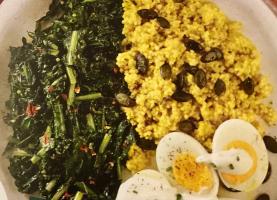Copy Link
Add to Bookmark
Report
Cider Digest #1649

Subject: Cider Digest #1649, 12 August 2011
From: cider-request@talisman.com
Cider Digest #1649 12 August 2011
Cider and Perry Discussion Forum
Contents:
Sulfur aroma developed after bottling cider (Christopher McGarvey)
Re: Sulfur aroma developed after bottling cider (Christopher McGarvey)
reselling 20L (and possibly 200L) IBC's (Melissa)
growing cider varieties (scott heath)
NOTE: Digest appears whenever there is enough material to send one.
Send ONLY articles for the digest to cider@talisman.com.
Use cider-request@talisman.com for subscribe/unsubscribe/admin requests.
Archives of the Digest are available at www.talisman.com/cider#Archives
Digest Janitor: Dick Dunn
----------------------------------------------------------------------
From: Richard Schoeler <rcschoeler@yahoo.com>
Date: Mon, 8 Aug 2011 05:30:33 -0700 (PDT)
I am looking for a way to accurately measure weight or volumes of cider
during the blending of single variety ferments. I have been unable to locate
a scale that will measure a weight up to 50 pounds (as I am using corny
kegs) to an accuracy of 1 ounce, nor have I found anything like an in-line
"flow meter" that would indicate volume of liquid passing through the device.
How are others accurately measuring volumes of juice during blending.
------------------------------
Subject: Sulfur aroma developed after bottling cider
From: Christopher McGarvey <thornsbreak@gmail.com>
Date: Mon, 8 Aug 2011 15:21:38 -0400
I recently bottled 3 gallons of a cider from last fall. It was
predominantly Stayman, with some Winesap, and a little York, Pippin, and
others. I got the juice from Chuck at Albemarle Ciderworks. It was a very
balanced juice, pH= 3.5, About 6 g/L of total acidity, and an original
gravity of 1.061.
I sulfited the batch at Andrew Lea's recommended rate of 2 Campden tabs per
gallon, and then pitched some Cotes des Blancs yeast to ferment it. It
fermented down to 1.001, for about 7.8% ABV. It had a slow primary
fermentation in the low 50s, lasting about two months. It was racked to
secondary to age in bulk for another 6 months.
At bottling time, I was very encouraged by the flavor. It was somewhat
delicate, but balanced and tasty. Here are my tasting notes at
bottling: Gravity
sample had a lovely fresh aroma, with a nice tannic, vaguely savory tinge,
and some floral qualities. Bright and pleasant, not at all dull. Plenty of
character. I was pleasantly surprised.The flavor of the sample was also
very nice. It had a very gentle sparkle. Bright and zippy, with a
perfectly balanced acidity. Floral notes and apple skins. Mouthfeel was
pleasant with surprising body.
I thought this cider had great potential to be my best yet.
I chose to bottle condition the batch, aiming for 2.8 vols of CO2 by adding
3.25 oz dextrose to the 3 gallon batch, as well as a bit of properly
rehydrated Nottingham yeast to do the work.
That was the 4th of July. Now, about a month later, I'm tasting a bottle of
the cider. It has a moderate level of carbonation, great clarity, but a
very disturbing hard-boiled egg sulfur present in the aroma and flavor.
This masks the lovely floral and apple aromas that were present at bottling
time. Further, the cider has taken on a sharpness that is a bit harsher and
drier than before, and has lost some of the fruit character and complexity
that seemed present earlier. It has a much more straightforward
champagne-like acidity without much else going on.
I have a few questions. Where did this sulfur come from, which I didn't
taste at any point earlier? Is it from sulfiting or simply a byproduct of
re-fermentation in the bottle? Secondly, will the sulfur dissipate in the
bottle, given time to mature?
Do other people find that bottle conditioning tends to create a sharper,
harsher cider and to obscure some of the fresh and fruity/floral flavors?
It's not as though I ridiculously carbonated this batch. It seems to have
a medium-low level of carbonation-- doesn't seem to have the spritz I would
expect of 2.8 vols, and is certainly less prickly than most of the
commercial ciders I've had (Foggy Ridge, Albemarle, etc). I don't think it
actually made it to 2.8 vols, so I don't think it's a case of just being
overcarbonated-- it doesn't have that kind of intense prickle at all. You
don't see a lot of bubbles rising through the body in the glass.
Does this one just need age, or is it marred for life? I still have 7 more
gallons to bottle from the same juice, one unsulfited and naturally
fermented with the feral yeast, and the other lightly sulfited and naturally
fermented. I don't want to create sulfur flavors in those two, and I'm
concerned about wrecking the nuances in them by bottle conditioning, so I'm
thinking of bottling them still-- or at least some of them. Unless it's
just a normal part of bottle conditioning that it requires some aging after
the refermentation to get a smooth, fresh character.
sorry for the long email, but I wanted to be as specific about my process as
possible so I can get helpful feedback. I don't have a lot of cidermaking
experience, and found it very disheartening that a batch that seemed to be
very promising at bottling has now become rather disappointing, and tasted a
good deal better before carbonating. It seems like adding CO2 should
heighten the experience, not obscure it. I suspect it would have, if I had
carbed artificially.
Thanks for your feedback!
------------------------------
Subject: Re: Sulfur aroma developed after bottling cider
From: Christopher McGarvey <thornsbreak@gmail.com>
Date: Tue, 9 Aug 2011 00:39:18 -0400
Also, a few follow-up questions to my last post that I thought of after the
fact:
I stumbled across one reference on the web that seemed to suggest that Cotes
des Blancs yeast might have be a killer-positive strain. It was from *Wine
Business Monthly* in the midst of a discussion about different approaches to
producing Syrah. The article can be found here:
http://www.winebusiness.com/wbm/?go=getArticle&dataId=39903
Can anyone confirm or deny this with any certainty? Is Cotes des Blancs a
killer strain? The yeast labs' websites are not at all helpful in trying to
determine this. (I find I'm continually frustrated by the very limited
specs that yeast producers provide, when they know so much more about each
of their strains).
I did notice that my bottles took longer than expected to carbonate.
usually when I've added fresh yeast at bottling to a beverage, it
carbonates within a matter of days. This cider carbed much more slowly, and
never seemed to gain as much oomph as I expected.
Here's a hypothesis for comment: perhaps if Cotes des Blancs is indeed a
killer strain, my Nottingham yeast added at bottling was rendered completely
ineffectual. This would leave the original Cotes des Blancs yeast to do the
carbonating-- however, this yeast would be in poor shape after racking, 9
months of aging, and racking again. That would potentially explain the
lackluster performance of the bottle conditioning, as well as perhaps the
sulfur off-flavors, which might have been rendered by the few, unhealthy and
overstressed Cotes des Blancs yeast cells left around to do the job.
This prompts another question. For those of you that bottle condition
naturally, what is your process? Do you add fresh yeast at bottling, and if
so, what strain? Do you prime with some sort of sugar, or do you bottle
early, when gravity hits 1.005 or so? How long do you find it necessary to
mature after bottling before flavor hits stride? Is it normal to encounter
rough or harsh flavors at first, and do they dissipate? Does anyone have
general guidance on the art of bottle carbonating cider? Is artificial
carbonation a more favorable approach?
Thanks!
------------------------------
Subject: reselling 20L (and possibly 200L) IBC's
From: Melissa <5happyapples@gmail.com>
Date: Tue, 9 Aug 2011 15:37:52 -0700
Hello,
I couldn't find the previous thread discussing bag-in-a-box, however I
am considering buying both 20L and 200L high-barrier bags for this
upcoming fall. Due to minimum order quantities I will likely have extra
and would like to resell them to other cidermakers if possible.
If you would be interested in buying (I wouldn't be marking them up
much, just enough to make it worth my trouble +shipping cost) please
send me an email with the quantity you'd be interested in buying as this
will help me with my own purchasing decisions. I am in Canada so keep
that in mind for shipping rates. I will only be reselling whatever I
don't require seeing as I am not in the usual business of distributing.
:)
- - Melissa Dobernigg - 5happyapples@gmail.com
------------------------------
Subject: growing cider varieties
From: scott heath <scott@fireballfarm.com>
Date: Tue, 9 Aug 2011 21:30:01 -0700
This is probably a shot in the dark but what the heck....
Does anyone out there in the mid to north Pacific coastal zones have
experience with GROWING any of the following varieties? I am near
Sebastopol, CA in USDA zone 8b and am deciding which additional
varieties to trial. Any information is greatly appreciated! What
works, what doesn't, etc.
Thanks, Scott
Arkansas Black
Binet Rouge
Black Oxford
Bramtot
Bulmers Norman
Campfield
Chisel Jersey
Coat Jersey
Frequin Rouge
Golden Harvey
Le Bret
Major
Marachal
Mattias
Michelin
Muscadet de Dieppe
Noel des Champs
Riene des Hatives
Ribston Pippin
Somerset Redstreak
Stembridge Cluster
Stoke Red
Twistbody Jersey
White Jersey
Tom Putt
------------------------------
End of Cider Digest #1649
*************************

























